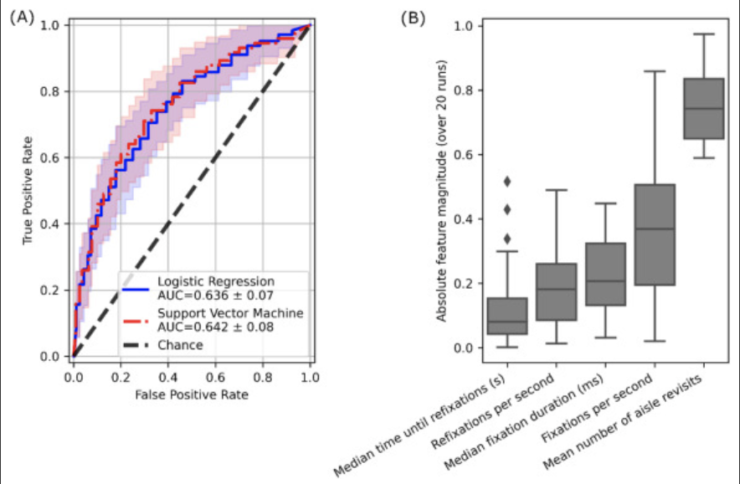News
New article online at Heliyon!
Applying machine learning to dissociate between stroke patients and healthy controls using eye movement features obtained from a virtual reality task.
We investigated the potential of the combination of Virtual Reality simulations and Eye Tracking to provide more detailed outcome measures for neuropsychological assessment.
Using a limited number of eye movement features, our models achieved an AUC of .76 in predicting whether each participant was assigned a short or long shopping list (3 or 7 items). Identifying participant as either stroke patients and controls led to an AUC of .64.

These results could be promising for application in the early detection of abnormalities in cognition, potentially in a variety of diseases. Eye movement data contains a rich set of signatures for detecting cognitive deficits, opening the door to potential clinical applications.
In collaboration with:
De Hoogstraat Rehabilitation Center
KCR Utrecht
FSW UU
UMCU Braincenter

